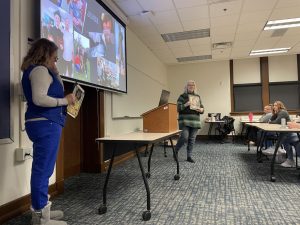Students unsure of residence hall changes

October 31, 2018
Among other changes set to take place in Winona State University’s housing system are the decisions to make Sheehan Hall a co-ed dorm and open up a gender-inclusive floor in Conway Hall.
As the number of students enrolling at Winona State declines, floors in several residence halls have been closed down over the past few years. One of these residence halls includes Prentiss-Lucas Hall, which was mentioned in last week’s edition of the Winonan.
Director of Housing and Residential Life Paula Scheevel explained that with the number of rooms available throughout campus, it makes sense to close down a residence hall and open up the floors that are currently closed.
“Once we decided that we needed to close Prentiss-Lucas, then the next question became, so how do we absorb those students and what does that look like? That meant opening floors back up and putting men in Sheehan,” Scheevel said.
Although this domino-effect of residence hall changes may make logistical sense, some are concerned that logistical reason is being considered more than the needs of students.
Lauren Saner, a senior double-majoring in psychology and music, has lived in Sheehan for three years, the last two as a resident assistant. Because of her job, she believes that she is aware of what students really need and want more than administration who may not know students on a personal level.
The concern that Saner and other women have about making Sheehan a co-ed dorm, is that it will take away the only option of an all-female building on campus, a factor that some women consider when thinking about what living space is safest for them.
Many students feel that their residence hall has a strong sense of community and Saner believes the same of Sheehan Hall. In the past, women were often placed in Sheehan as a result of their first housing preferences being unavailable. However, Saner explained that with the new type of housing selection implemented this year, most Sheehan residents are there by choice.
“I think the fact that the girls here have been able to pick where they want to live has definitely made it a little bit easier, so then they’re more accepting of their community,” Saner said.
That accepting community seems to have created a safe atmosphere that Saner believes residents need.
Saner explained that she feels safe in Sheehan because it is all female. She is unsure that in the current political climate she would feel safe in a building that was co-ed.
Scheevel has taken into consideration concerns such as Saner’s and mentioned that the residence halls are generally safe and the Campus Security will still be located in Sheehan Hall, but she also recognized that there is a population of women who prefer not to live with men.
“There are floors on west campus that are only female floors. Conway has floors specifically for females,” Scheevel said. “So, there will no longer be a building that is filled with women, but there will still be populations within buildings across Main Campus and West Campus, that will still be only women.”
While converting Sheehan Hall into a co-ed dorm may lessen the feeling of safety for some women, Winona State Housing is working on a change intended to promote inclusion and safety for students who identify as LGBT.
Housing and Residential Life has been adopting the mission statement WISE, meaning Welcoming, Inclusive, Safe and Engaging, over the last couple of years.
Emily Meyer, the quad residence hall director, believes there is no better way to live out this mission statement than to provide gender-inclusive housing on campus.
Conway will keep three floors all-female and open up one floor as gender-inclusive. Depending on student interest, the space for gender-inclusive housing could grow in coming years.
Sydney Radler, a senior social work major, who is a co-president of Full Spectrum, is excited but also has concerns about the new gender-inclusive housing.
“I hope that administration is really doing their research on this. They should look at how other university’s have done gender-inclusive housing and reach out to [LGBT] faculty and students,” Radler said.
Radler does, however, state that this could be a good thing for the university if done right.
“This is an opportunity for students who don’t feel like they have a community here,” Radler said. “This has the potential to be a really amazing thing, I just hope a lot of thought has been put into this.”
The gender-inclusive floor will not just be for students who identify as a non-binary gender.
“A student who may be an ally could live there. A student who may identify as transgender can live there. A student who just wants gender-inclusive housing can live there as well. We’re not asking any questions about why [students] want to live here, they just get to pick it,” Meyer said.
































